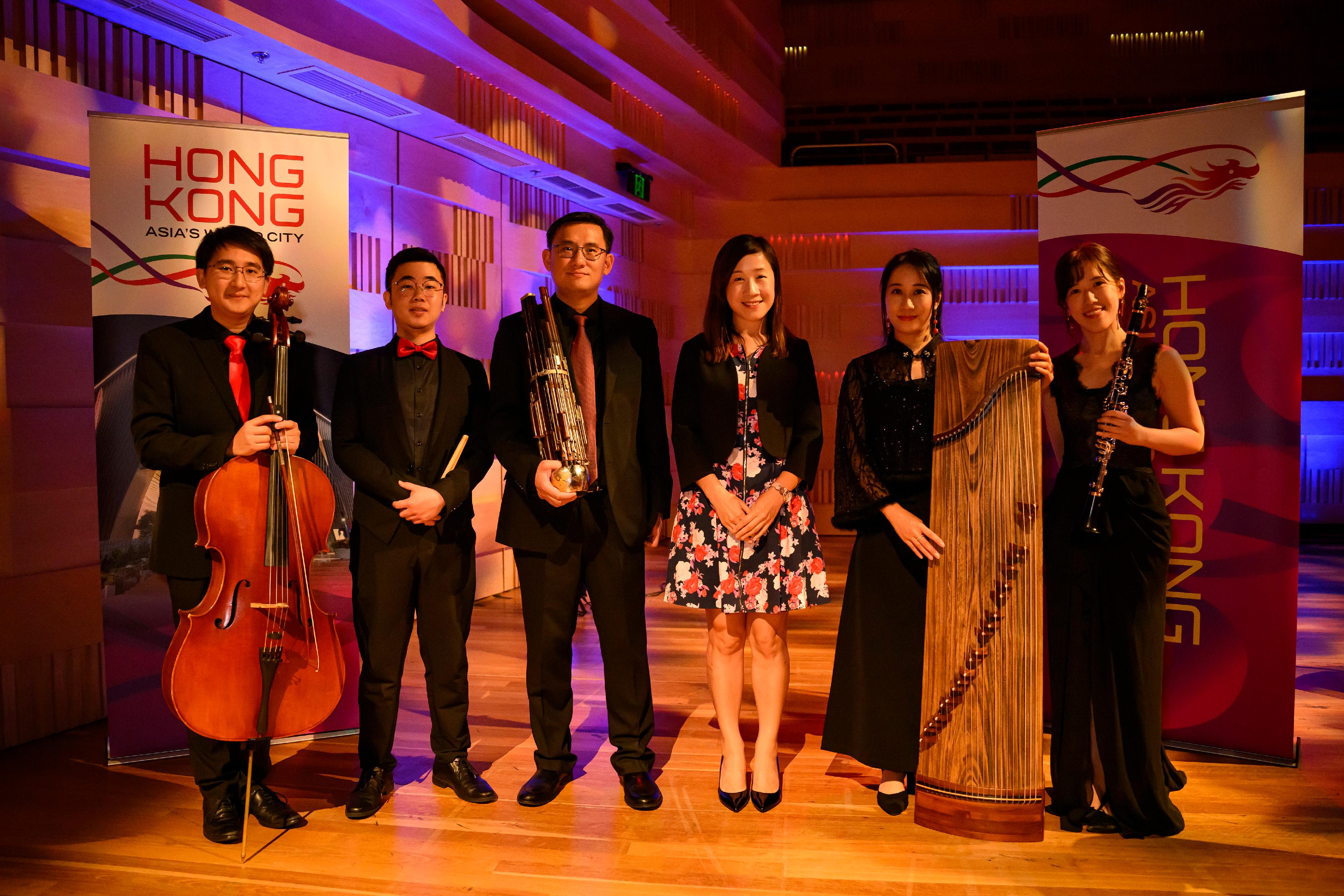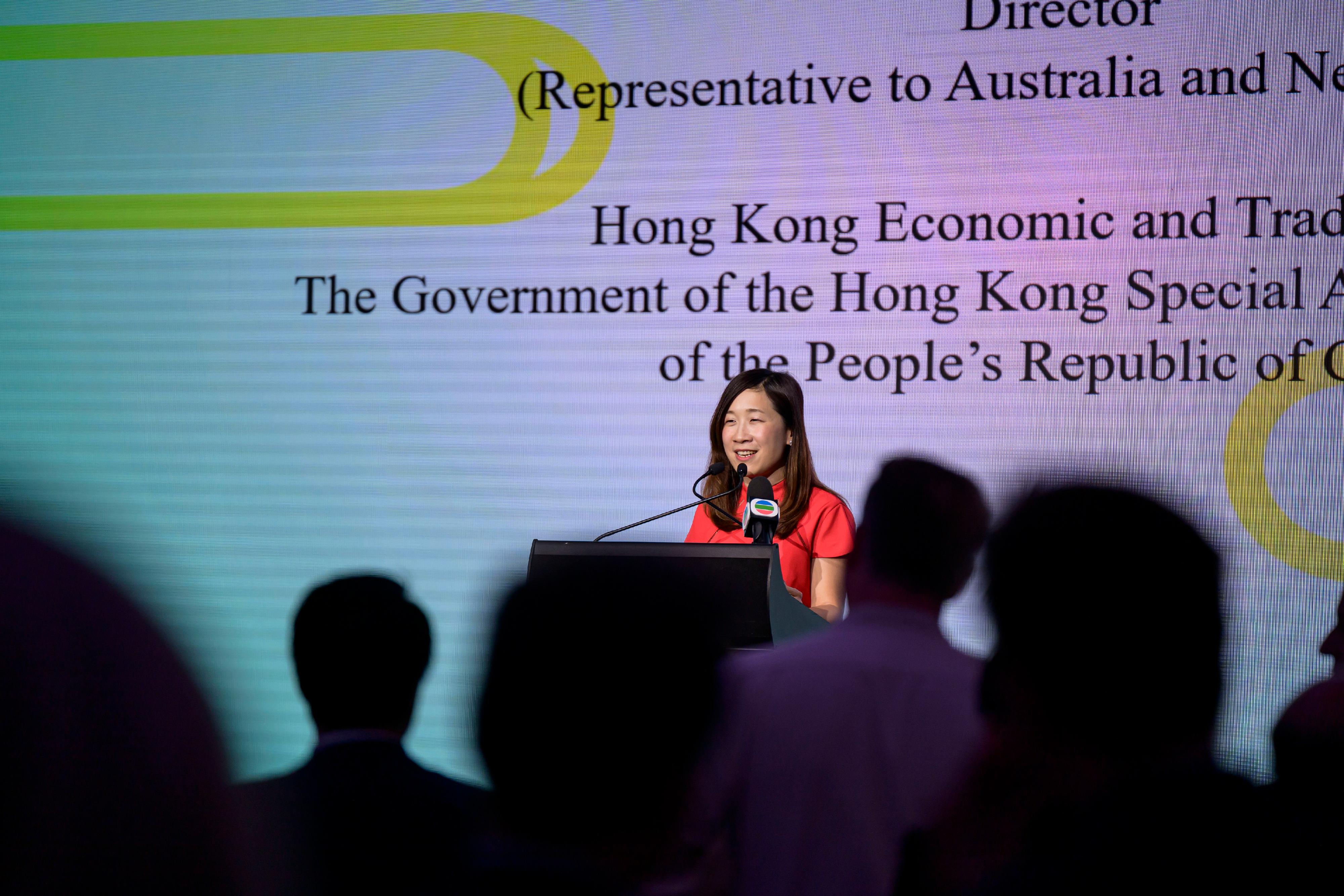LCQ3: Prevention of diabetes
Following is a question by the Hon Lam So-wai and a reply by the Acting Secretary for Health, Dr Libby Lee, in the Legislative Council today (February 21):
Question:
It is learnt that at present, about 700 000 people in Hong Kong suffer from diabetes, meaning that 1 out of every 10 people is a diabetic patient, with more than one fifth of patients under the age of 40. In addition, it has been reported that according to a study, the youngest diabetic patient in Hong Kong is only three years old. In this connection, will the Government inform this Council:
(1) given that diabetic patients have become increasingly younger, whether the Government will review if the current approach of health education alone is effective in raising the awareness of diabetes prevention among parents, adolescents and children, hence making adolescents and children reduce the consumption of drinks with a high sugar content; if it will, of the details;
(2) as it has been reported that the number of diabetic patients seeking consultation from the Hospital Authority has risen in recent years, whether the Government has projected the additional manpower and resources required in the public healthcare system in the current financial year as well as each of the next five financial years to cope with the situation; and
(3) whether it will, from the perspective of “prevention is better than cure”, consider following the practice of countries such as France, the United Kingdom, Denmark and Norway in introducing a sugar levy to raise the prices of sugary drinks, so as to dampen the desire of the public (especially children) to buy such drinks, and subsidise public healthcare expenditure with the revenue from the sugar levy?
Reply:
President,
While Hong Kong’s various health indices rank among the best in the world, just like many developed places, non-communicable diseases (NCDs), including diabetes, have exerted heavy pressure on citizens’ health and social development. In 2018, the Government announced the “Towards 2025: Strategy and Action Plan to Prevent and Control Non-communicable Diseases in Hong Kong” which focuses on four NCDs, including diabetes, as well as four shared behavioural risk factors, namely unhealthy diet, physical inactivity, tobacco use and harmful use of alcohol.
In consultation with the Environment and Ecology Bureau, the Hospital Authority (HA) and the Department of Health (DH), my consolidated reply to the questions raised by the Hon Lam So-wai is as follows:
(1) Diabetes is classified into two types, Type 1 and Type 2. Type 1 is caused by the damaged insulin producing cells and is associated with hereditary factors, immunity or environmental factors. Diabetes diagnosed in children or adolescents is primarily Type 1. In theory, the 3-year-old child with diabetes mentioned by the Hon Lam is very likely a case of Type 1 diabetes. Type 2 is caused by the resistance to insulin inside the body. Apart from hereditary factors, the main factors for Type 2 are related to unhealthy lifestyle and eating habits, obesity or lack of physical activity. In general, diabetes diagnosed in adults is Type 2. According to the results of the Population Health Surveys in recent years, there is no significant rise in diabetes diagnosis among individuals aged 15 to 44, and also no trend of persons suffering from diabetes at a younger age. The relevant figures are at Annex I.
Nevertheless, the Government has been promoting public awareness of diabetes prevention through a life-course and environment-based approach. Measures particularly targeted at adolescents and children include:
(i) In the 2009/10 school year, the DH, in collaboration with the Education Bureau (EDB), launched the EatSmart School Accreditation Scheme under the EatSmart@school.hk Campaign, which encourages family, school and the community to work together with the aim of motivating and helping all primary schools in Hong Kong to formulate and implement healthy eating school policy. In view of the positive outcome, the DH therefore launched the StartSmart@school.hk Campaign to promote healthy eating and physical activity among preschoolers across the city since 2012.
At present, about 300 primary schools and special schools (i.e. about 45 per cent of the total number in Hong Kong) and about 640 kindergartens and child care centres (i.e. about 60 per cent of the total number in Hong Kong) are participating in the campaigns.
(ii) In the 2018/19 school year, the DH launched the Healthy Drinks at School Charter. Participating kindergartens and child care centres have committed to encouraging young children to drink water, avoiding to provide drinks with added sugar or with a relatively high sugar content, etc. Number of participating schools has increased from around 380 at the beginning to around 480 in the 2022/23 school year.
(iii) The District Health Centres (DHCs) and DHC Expresses in all 18 districts in Hong Kong draw up personalised health plan for citizens in accordance with the framework of Life Course Preventive Care Plan. Measures particularly targeted at adolescents and children include weight management and group classes on healthy diet; and providing outreach activities at schools including health education, health risk assessment, and dietary education focusing on low-salt low-sugar.
(iv) “To lead a Healthy Lifestyle” is one of the seven learning goals of school curriculum set by the EDB. Students learn about healthy lifestyle and diet (including diabetes prevention) through different subjects.
Apart from the above measures, the Student Health Service also checks enrolled students’ body weight during annual health assessments, provides counselling and health advice to students with sub-optimal weight, and makes referrals to specialists if necessary. The relevant data is at Annex II. In fact, about 20 per cent of school children were overweight or obese. Prevention of diabetes cannot be attained solely by reducing the consumption of drinks with high sugar content. It requires an array of measures, including a healthy diet, suitable physical activity and appropriate body weight. The DH will step up promotion at the school level through the Whole School Health Programme to help children develop a habit of regular physical activity starting from childhood.
The Government has also been encouraging members of the public to actively manage their own health through the eHealth mobile application (eHealth App). Members of the public can input data of their bodyweight and blood pressure in the eHealth App, with a view to monitoring their own bodyweight for weight management or health management. This year, under the Government’s public health promotion programme, a health challenge platform on eHealth App will be launched to encourage students to be more physically active.
(2) The second question is related to figures. There were about 540 000 diabetes patients in the HA in 2022, with an annual growth rate at 4 to 5 per cent, similar to that in the past. While the HA will not make assessment of manpower and resource requirements regarding individual diseases, it is more important to note that complications of diabetes will incur the use of more medical resources. Poor control of diabetes may lead to serious complications. For example, at present, about 50 per cent of incident cases of end stage renal failure are attributable to diabetes, some 30 per cent of diabetic patients are diagnosed with diabetic retinopathy and over 16 per cent diabetes patients had a history of coronary heart disease. Effective control of diabetes can therefore reduce the need for other specialist services arising from complications of diabetes.
To achieve the goal of “early prevention, early identification and early treatment”, the Government launched the Chronic Disease Co-Care Pilot Scheme (CDCC Pilot Scheme) last year to provide subsidised screening services in the private healthcare sector to Hong Kong residents aged 45 or above with no known medical history of diabetes or hypertension. As at February 15, 2024 (i.e. after launching the Scheme for around three months), more than 20 000 citizens have participated in the CDCC Pilot Scheme. Among that, over 9 000 participants have completed screenings whereas their family doctors have explained the results and arranged appropriate health management plans for them. We noted that about 3 000 participants (about 30 per cent) were diagnosed with prediabetes (note), diabetes or hypertension.
On the whole, the Government will conduct regular planning and projection exercises for healthcare professional manpower and project the demand systematically.
(3) Lastly, according to the information provided by the Environment and Ecology Bureau, the Government has all along been making reference to the measures taken by different regions in promoting healthy eating and prevention of diabetes, and has noted that different local and overseas stakeholders have different views on the effectiveness of introducing tax measures to achieve the goal of reducing public’s sugar intake from food.
In fact, getting the public to accept less-salt-and-sugar cannot be achieved overnight and requires comprehensive information dissemination, active promotion by the Government and participation of the industry. Regarding food information, according to relevant legislation, food claiming to be “low-sugar” must contain no more than 5 grams of sugar per 100 grams or 100 millilitres of food. According to a survey conducted by an academic institute commissioned by the Committee on Reduction of Salt and Sugar in Food (the Committee) in 2022, the public had improvement in terms of awareness and action towards reduction of salt and sugar when compared with that in 2021, showing a positive impact from the current promotion work. The Committee, in conjunction with relevant bureaux and departments, will continue to enhance the publicity and education efforts with a view to further raising the public’s awareness and action towards reduction of salt and sugar.
Thank you, President.
Note: A blood glucose level ranging from 6.0 to 6.4 per cent for glycated haemoglobin or a fasting glucose level of 6.1 to 6.9 mmol/L. read more









